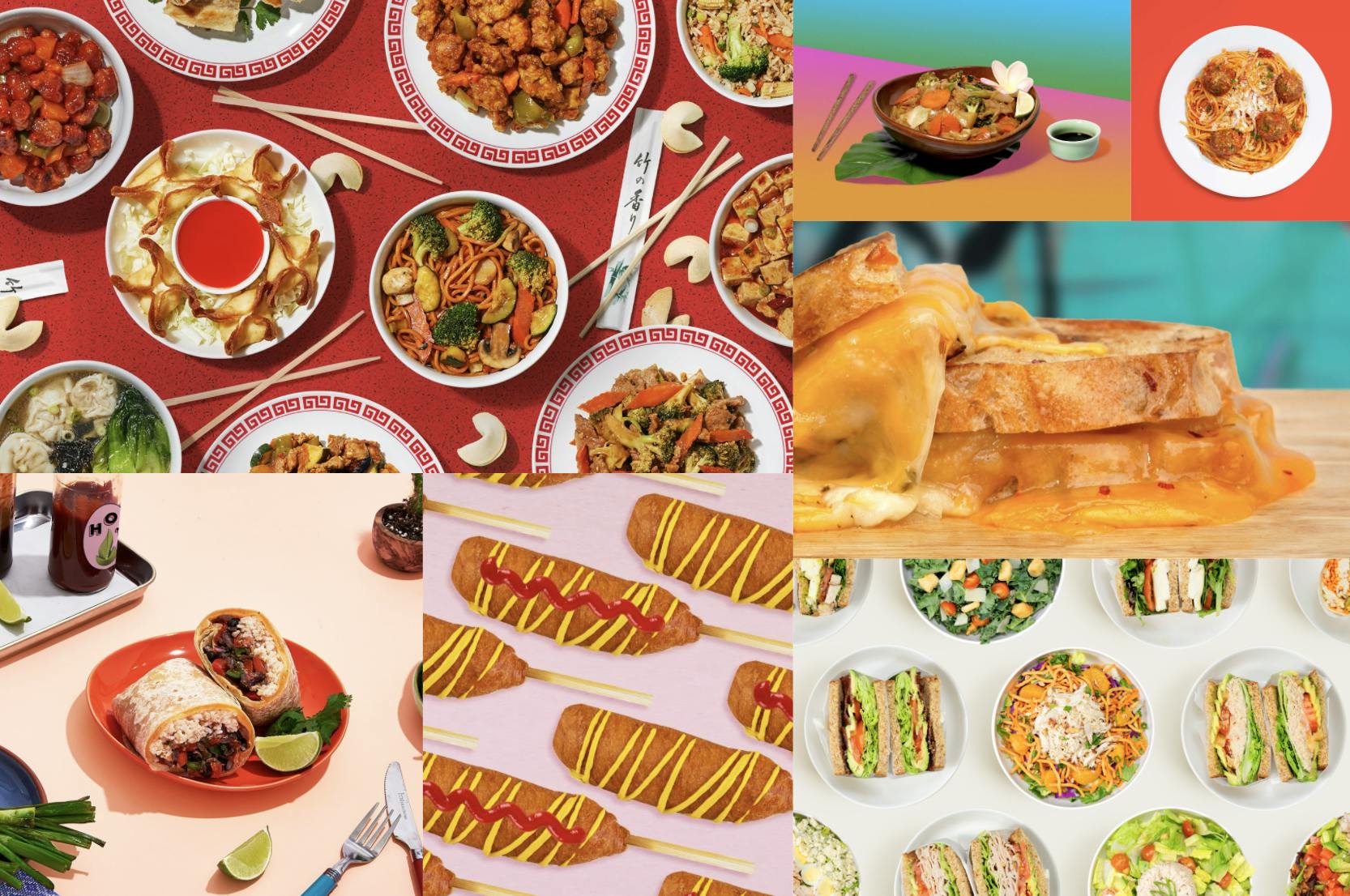
Table of contents
- What is a virtual brand?
- Why should my restaurant create a virtual brand?
- How do I find a concept for my virtual brand?
- How can I start a virtual brand with one main product?
- How do I choose a name for my virtual brand(s)?
- How do I create the perfect menu for my virtual brand(s)?
- Options and modifiers
- Perfecting your virtual restaurant menu with extras, photos, and descriptions
- How to make a successful virtual brand
- FAQs: Virtual Brands for Restaurants
- How can I start a virtual brand with Otter?
What is a virtual brand?
If you’re a restaurant owner or entrepreneur, you’ve likely heard the term “virtual brand” floating around more and more lately. But what exactly does it mean?
A virtual brand is a food concept that exists only online, typically available through delivery apps like Uber Eats, DoorDash, or Grubhub. Unlike traditional restaurants, virtual brands don’t require a storefront, signage, or dine-in space; they operate out of existing kitchens and use the same equipment and staff to produce food for new menus sold under different brand names.
This model enables restaurants to diversify their offerings, optimize kitchen capacity, and expand into new customer segments with minimal overhead. With the right strategy, virtual brands can become a profitable extension of your business or even your primary source of revenue.
In this article, we’ll walk you through how to build your first virtual brand from scratch—step by step using what you already have in place.
Why should my restaurant create a virtual brand?
Today’s customers have no problem ordering food from places they haven't tried before, so creating a new brand has multiple benefits:
- Dominate the delivery platforms. Having multiple brands means multiple appearances on platforms like Uber Eats, Postmates, Caviar, and DoorDash. If you’re currently listed on these delivery platforms, you appear 1 time on each of them. But what if you could appear 2 or 3 times?
- Increase your sales. Along the same lines, 3 appearances on each delivery platform translate to 3x the reach and potentially 3x the orders and sales.
- Optimize your kitchen space. If your kitchen has enough capacity to prepare more food, why not take advantage of it with ghost kitchen software? (See also: What is a ghost kitchen?)
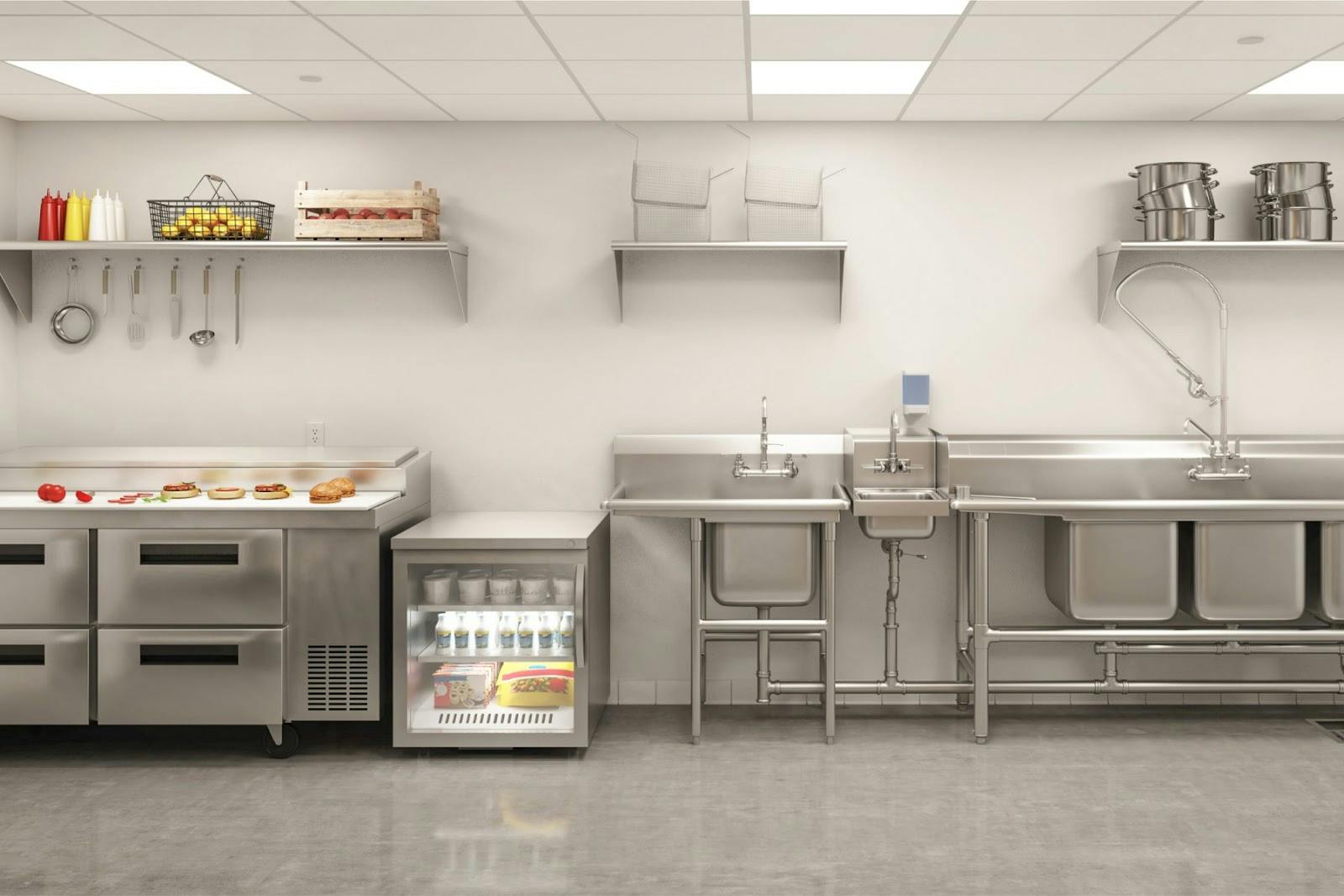
- Limit waste and take advantage of your current inventory. You can create a virtual brand with the ingredients you already use to optimize your inventory.
- Experiment with your kitchen. Having an additional brand will allow you to try new concepts and dishes without changing what people love about your main brand
- Multiply your ROI. The idea is to use the resources you already have (space, staff, ingredients) to significantly increase your investment return.
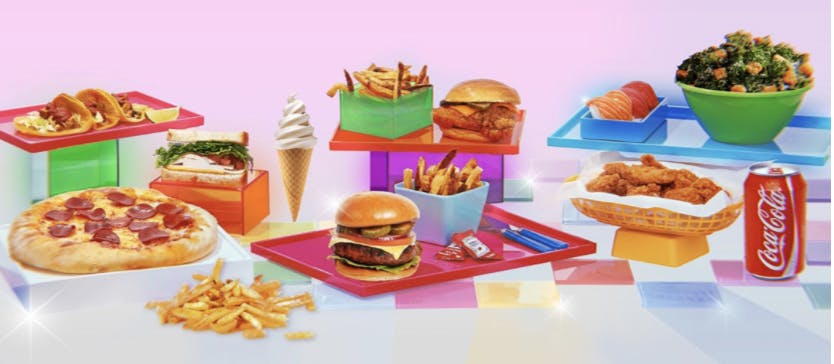
How do I find a concept for my virtual brand?
First things first, it’s time to come up with a concept for your virtual brand.
Start by thinking about what type of customers you’re looking to attract with a new offering.
Head over to the delivery platforms and begin by asking yourself some questions: what kind of food is popular in your area? Is there something missing in the area? What are your best-performing items, and how can you take advantage of them?
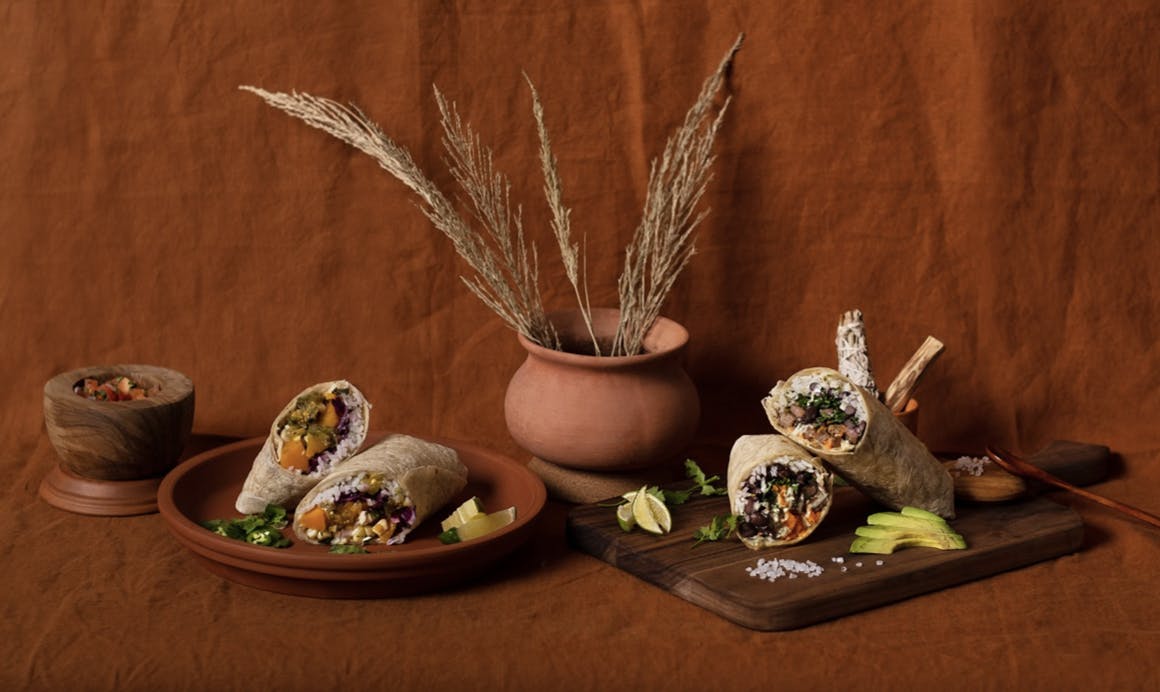
Maybe you offer a couple of vegetarian dishes on your menu that has been well received. How about creating a separate vegetarian virtual brand? A salad-bar? Maybe your desserts are trendy and could have their brand.
Think about what concepts are already 100% adapted to delivery. You must consider factors such as prep times, profit margin, temperature, and ease of delivery. It is best to focus on simple dishes with ingredients similar to what you already use in your main brand. Remember that you can experiment with more than one virtual brand to get the most out of your kitchen.
Note: the goal is for the customer to think that you specialize in this type of cuisine. When a customer goes on a delivery platform like Uber Eats or DoorDash and wants to eat a burger, they’ll probably go directly to a burger restaurant. So instead of offering just a burger on your main menu, you can become a burger specialist!
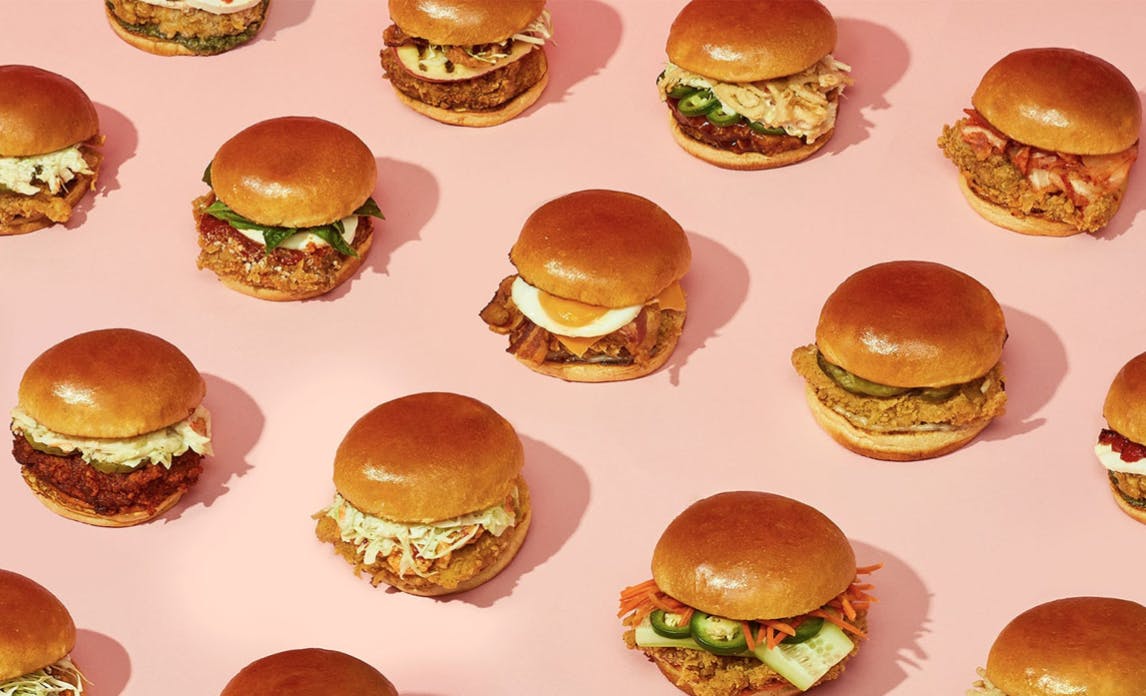
How can I start a virtual brand with one main product?
If you have different categories in your menu, you can split it up and create specialized brands.
What’s great is that you will use the same ingredients and resources that you already have. In most cases, you’re going to offer the same dishes that you do today, but you’re selling them differently with different positioning. This will allow you to reach new customers and differentiate your business.
Still, we advise keeping your main restaurant.
First, you already have a customer base that orders from you because they know you and like your food.
Second, even if you set up multiple virtual restaurants, these won’t steal customers from your main one. You’ll only have new customers added to your customer base.
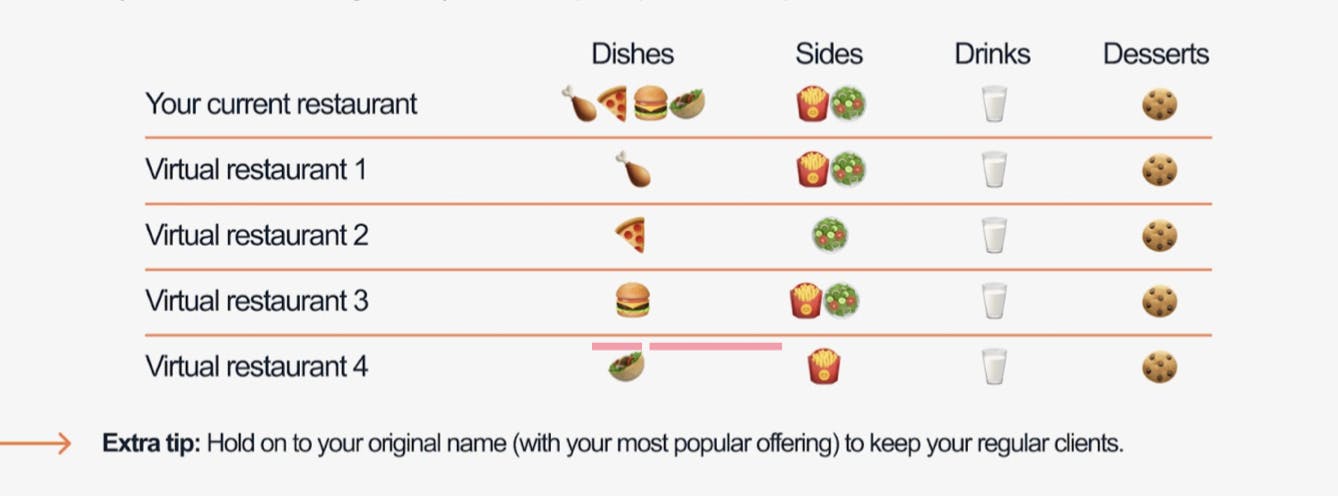
How do I choose a name for my virtual brand(s)?
Before launching a virtual brand, you need a solid concept, and that starts with market research and a bit of creativity.
Start by identifying gaps in the delivery landscape in your area. Ask yourself:
- What cuisines are trending locally?
- Are there food categories underserved in my area?
- What dishes on my current menu perform best in delivery?
- Can any of these be spun off into their own specialized brand?
Let’s say you offer a few vegetarian or vegan dishes and they consistently receive positive reviews. That might be a clue to launch a plant-based virtual brand. Or maybe your wings, desserts, or sandwiches stand out—these could easily become the foundation of a niche delivery-only concept.
Keep it simple. Virtual brands should focus on meals that:
- Are easy to prepare
- Travel well in delivery packaging
- Have high margins
- Use ingredients already stocked in your kitchen
One major key to success? Specialization. Customers often search delivery apps for a specific type of food. If someone wants a burger, they’re likely to order from a place that looks like it only does burgers. That’s where your virtual brand comes in: by presenting your concept as a dedicated burger joint, salad shop, or dessert kitchen, you instantly gain credibility and appeal even if it’s all made in the same kitchen.
And remember, you don’t have to stop at one! Many restaurants manage two or more virtual brands from the same kitchen, expanding their revenue streams with minimal extra cost.

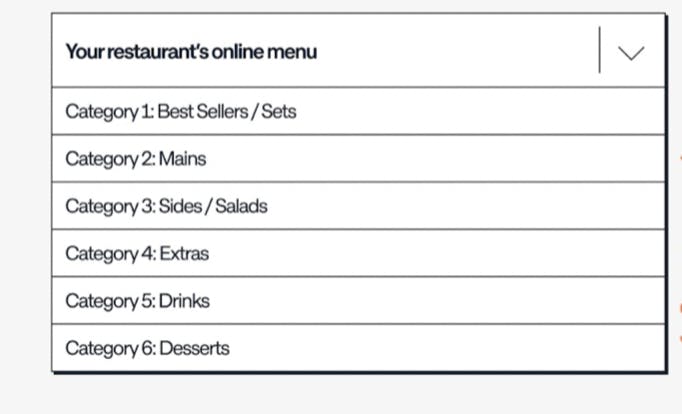
Options and modifiers
Increase your average ticket value by adding options to your dishes. Every dish should have at least one option, ideally with multiple ingredients to add.
Your goal is to make it easy for your customers to add a sauce or an extra, to avoid such requests as “please replace the fries with a salad” which are twice as likely to lead to mistakes.


How to make a successful virtual brand
Now that you know what a virtual brand is, how it works, and how to develop a concept, name, and menu—it’s time to learn the five main tips for ensuring your virtual brand succeeds:
1. Quality first
When working solely with delivery, prep and delivery times should be two of your key considerations. However, you should not sacrifice the quality of your dishes. Make sure you come up with a simple concept that allows your staff to manage more than one brand without impacting service levels.
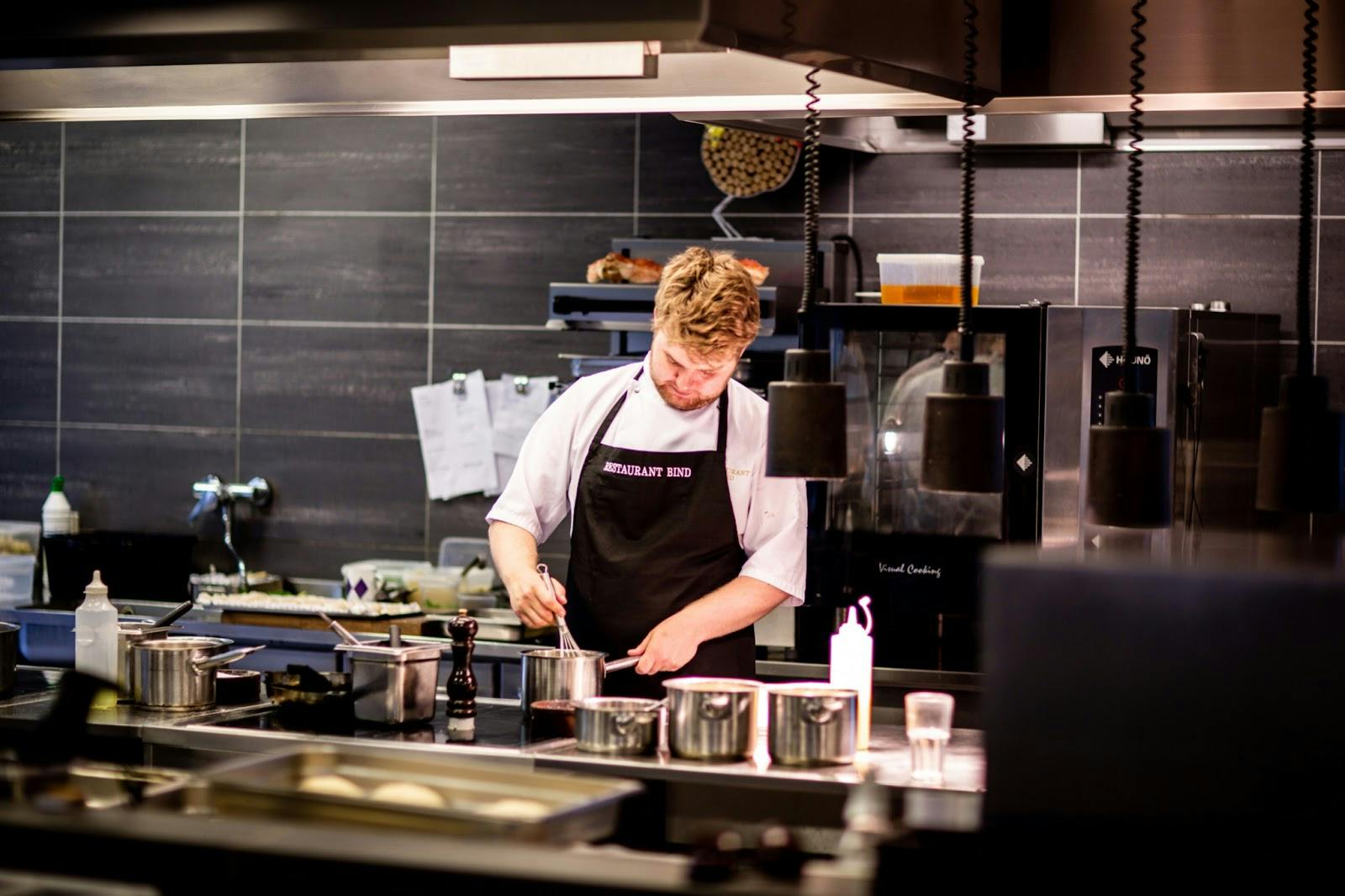
2. Branded packaging
When it comes to delivery, the packaging is a big part of your brand image. Containers not only allow your guests to receive their dishes properly, but they are also a reflection of your identity and one of the first points of contact they will have with your concept.

3. Customer connection
Because your customers will only be interacting with your brand on delivery platforms, you have an opportunity to find creative ways to turn one-time orderers into loyal customers.
How about including thank you notes or promotions in each bag? Anything that allows your restaurant to show the customer that you appreciate their business will help in this area.
4. Run promotions
Promotions are one of the best tools to make yourself stand out on delivery platforms. You can experiment with different ideas: promotions for regular customers, a free dessert for first-time customers, or a percentage discount on your most popular dishes.
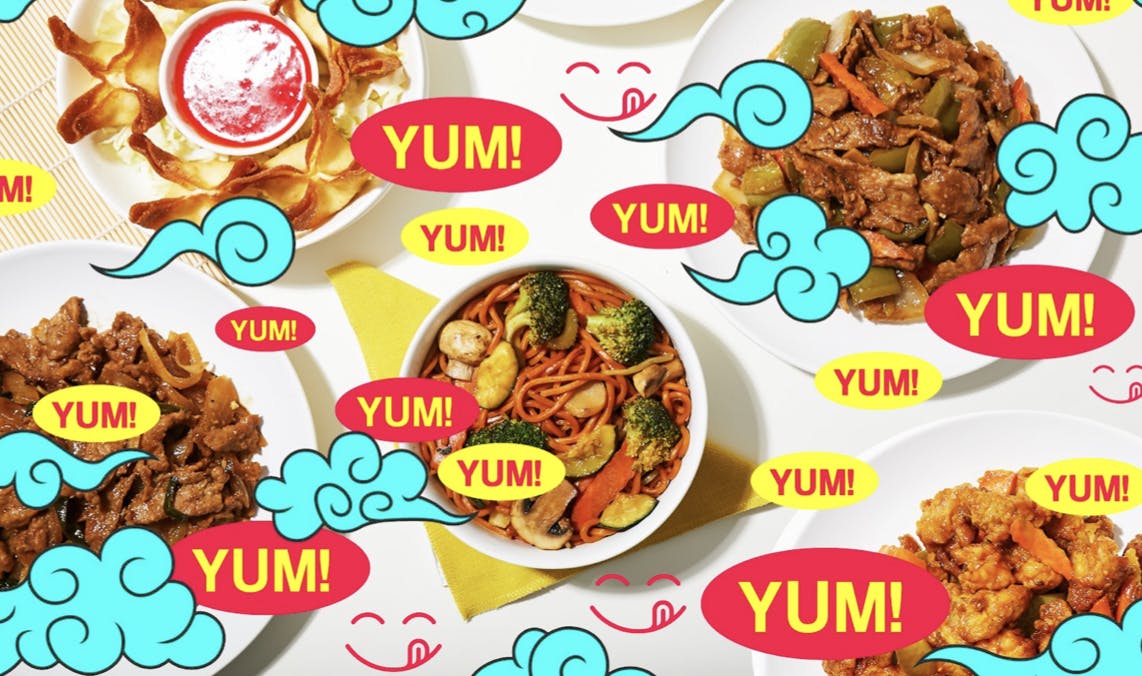
FAQs: Virtual Brands for Restaurants
Q: How is a virtual brand different from a traditional restaurant?
A: Traditional restaurants serve dine-in guests and often rely on foot traffic. Virtual brands don’t need a storefront or dining space. They exist exclusively on delivery platforms and serve customers who order food online.
Q: What are the benefits of launching a virtual brand?
A: Virtual brands let you:
- Maximize use of your existing kitchen and staff
- Create new revenue streams with low investment
- Test new food concepts with minimal risk
- Reach new customers through specialized offerings
Q: Can I really run multiple brands from one kitchen?
A: Yes! That’s one of the most efficient uses of a virtual brand strategy. As long as your kitchen can handle the volume and complexity, you can launch several brands tailored to different food niches or customer needs.
Q: Will customers know the virtual brand is connected to my restaurant?
A: Usually not. Virtual brands are designed to appear as independent entities on delivery platforms. That means customers are choosing your food based on the strength of the new concept, not necessarily your main restaurant name.
Q: What kinds of food work best for virtual brands?
A: The best options are dishes that are:
- Delivery-friendly (don’t get soggy or cold too fast)
- Profitable (good cost-to-margin ratio)
- Simple to prepare
- Already popular or easy to market (like tacos, wings, bowls, burgers, or baked goods)
Q: How much does it cost to start a virtual brand?
A: The startup cost is typically very low. Since you’re using your current space, staff, and often the same ingredients, the biggest investments are branding, digital marketing, and creating a strong online presence.
Q: Do I need a separate business license or new staff?
A: In most cases, no. You’ll want to check local regulations, but many restaurant owners can operate virtual brands under the same business license and team, as long as the food safety and labeling practices are maintained.
How can I start a virtual brand with Otter?
When you create a new virtual brand, you get an additional tablet to receive orders. Your sales increase, but your space gets more cluttered, and your operations become messier.
That’s where Otter comes in. Otter is a solution that merges all your delivery accounts on one tablet and one printer.
With Otter, you’ll be able to manage your delivery business from start to finish:
- Consolidate all your delivery partners and orders into a single tablet.
- Modify, add and remove menu items across your delivery platforms with one simple click.
- Access aggregated data across all of your delivery partners to drive actions that improve your sales and operations.
- Dive into sales, orders, and financial data by store location, brand, delivery service, and more.
- And much, much more.
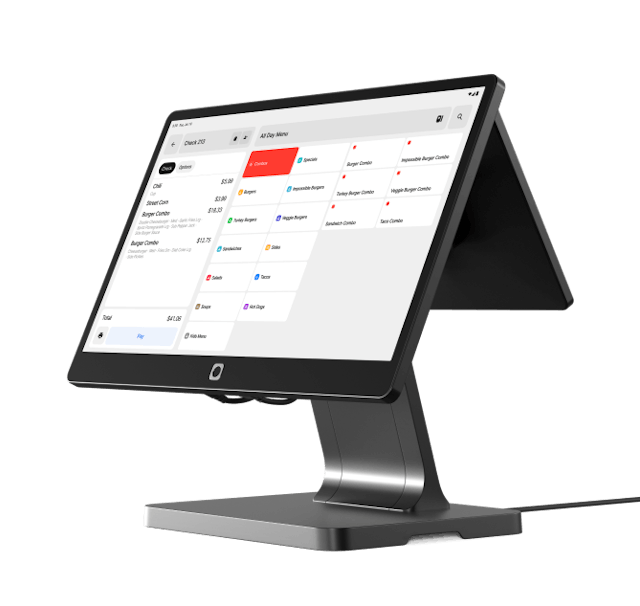
Otter POS for restaurants
The all-in-one platform that enhances operations across your entire business. Consolidate orders, increase sales, and make your days easier.

Book a demo to see how Otter’s all-in-one platform can help your restaurant thrive.